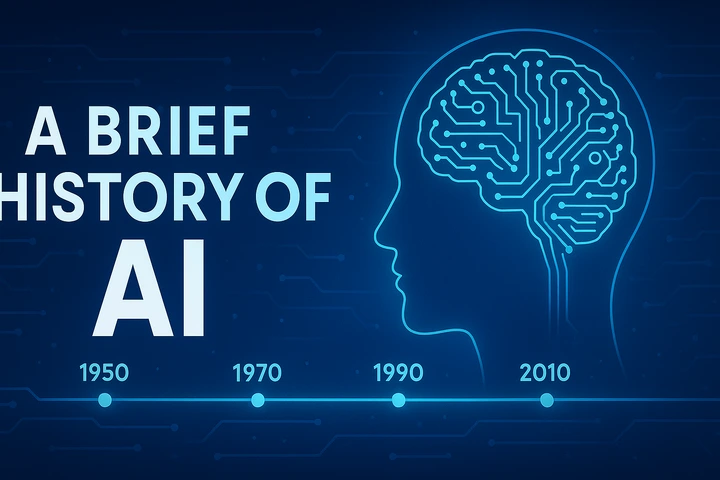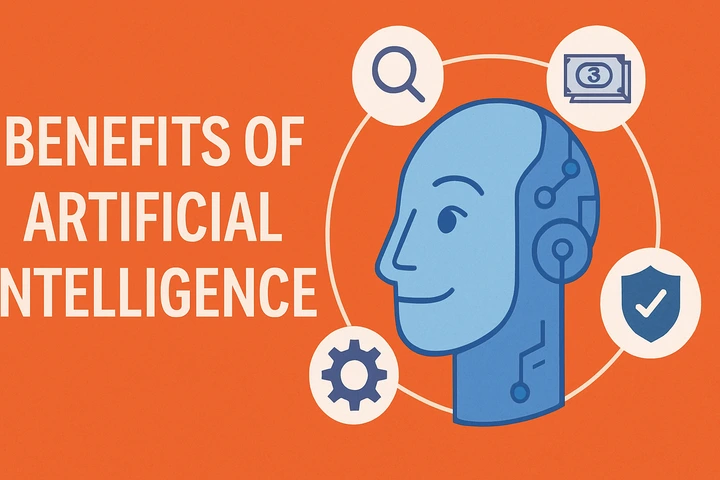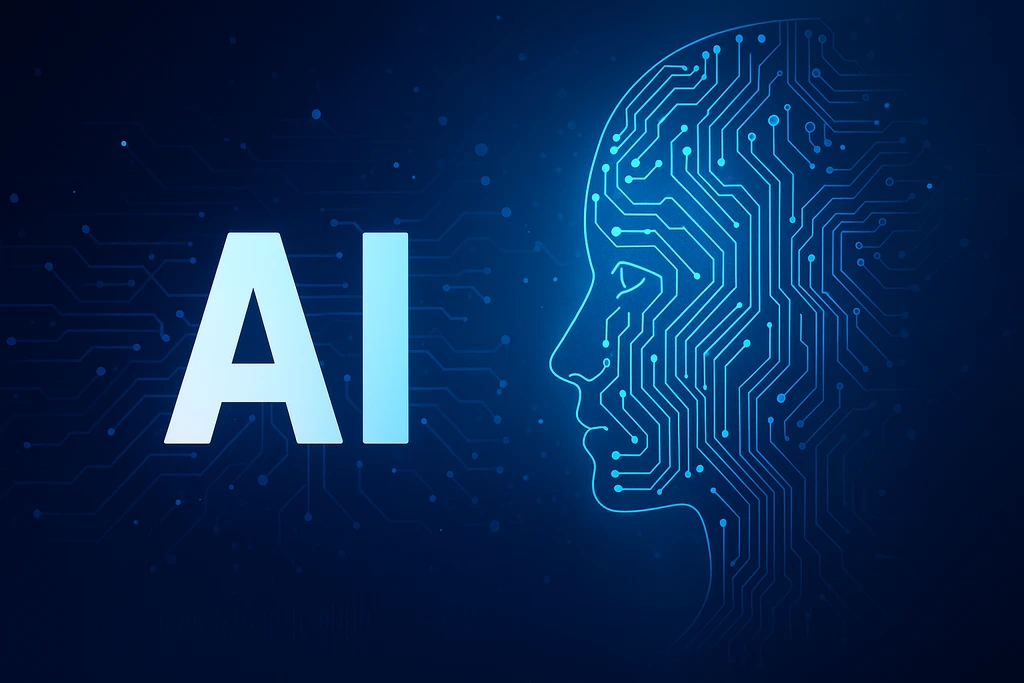Artificial intelligence, or AI, is no longer a futuristic dream or a buzzword limited to research labs. It is here, transforming businesses, societies, and everyday lives. People interact with AI more often than they realize—through Google searches, Netflix recommendations, fraud detection in banking, and even AI voices that power virtual assistants.
But what exactly is artificial intelligence? This comprehensive guide explains its meaning, how it works, its history, real-world applications, and what the future may hold.
What is Artificial Intelligence (AI)
Artificial intelligence refers to the design of machines and software systems that can perform tasks typically requiring human intelligence. These tasks include analyzing information, recognizing speech, making decisions, solving problems, and adapting to new experiences. Unlike traditional software, which operates according to fixed rules, AI systems learn from data and continually improve their performance over time.
The field itself is vast. Machine learning enables computers to improve automatically when exposed to new information. Deep learning, a more advanced subset, uses artificial neural networks to simulate human brain functions, allowing breakthroughs in image recognition and natural language processing. Natural language processing enables computers to understand human language, while computer vision enables machines to interpret images and video. Together, these fields make AI versatile and powerful.
A Brief History of AI

Artificial intelligence has a rich history, dating back to the mid-20th century. In the 1950s, Alan Turing, a pioneering British mathematician, asked the famous question: Can machines think? His Turing Test became a milestone in evaluating machine intelligence. In 1956, the Dartmouth Conference officially coined the term “artificial intelligence,” establishing AI as a formal field of study.
The following decades saw both progress and challenges. Early programs could solve algebra equations and play strategy games, but limited computing resources prevented larger breakthroughs. The 1970s and 1980s saw periods of slowed progress, known as “AI winters,” due to reduced funding and high expectations that could not be met. Still, milestones such as IBM’s Deep Blue defeating world chess champion Garry Kasparov in 1997 showed that AI could achieve remarkable feats.
The real turning point came in the 2010s, when advances in computing power, access to big data, and deep learning sparked a revolution. AI systems could suddenly process images, recognize speech, and generate text with human-like accuracy. Today, AI powers applications as varied as language translation, medical diagnosis, and autonomous driving, with research continuing at a rapid pace.
How AI Works
At its core, artificial intelligence works by processing data, identifying patterns, and making predictions or decisions based on that data. The process typically begins with large datasets, which can encompass text, images, videos, or numerical data. Algorithms analyze these datasets, learning patterns and correlations. Once trained, the system can then interpret new information and produce results, such as recommending a movie, predicting stock performance, or identifying diseases in a medical scan.
The scale of modern AI is made possible by three factors. First, there is the sheer availability of data. According to Statista, over 328 million terabytes of data are generated daily, creating the fuel for AI training. Second, there are sophisticated algorithms, such as deep learning, which enable machines to process information in more complex and nuanced ways.
Finally, powerful hardware such as GPUs and cloud-based platforms enables rapid processing, making it possible to train AI models on massive datasets that would have been unthinkable a few decades ago.
Types of Artificial Intelligence
Artificial intelligence can be categorized based on both its capabilities and functionality.
From a capability perspective, there are three levels. Narrow AI, also known as weak AI, refers to systems designed for specific tasks. Examples include virtual assistants like Siri and chatbots that handle customer service inquiries. Most of the AI in use today falls into this category. General AI, also known as strong AI, remains theoretical and is envisioned to perform any intellectual task that a human can.
Superintelligent AI represents an even more advanced stage, where machines surpass human intelligence entirely. While this remains speculative, it raises important ethical debates.
When considered in terms of functionality, AI takes on four distinct forms. Reactive machines are the simplest, capable of responding to specific inputs without requiring memory storage. Limited memory AI builds on past data to improve decision-making, such as in autonomous driving. Theory of mind AI, still in development, would enable machines to comprehend emotions and social interactions.
The final category, self-aware AI, represents a future possibility where machines gain consciousness—a development that could profoundly reshape society.
Real-World Applications of AI
Artificial intelligence is already at work across various industries, solving problems at a large scale. In healthcare, AI systems analyze scans and lab results, helping doctors detect diseases earlier and more accurately. Some studies show that AI can detect breast cancer in imaging tests with accuracy rates of more than 95 percent.
In finance, AI monitors millions of transactions every second, flagging anomalies and reducing fraud by up to 40%. Retail has also undergone a significant transformation, with AI-driven recommendation engines accounting for more than a third of Amazon’s sales. Transportation benefits through autonomous driving systems and traffic management solutions that reduce congestion.
In education, AI-driven platforms personalize lessons to match each student’s learning style. Customer service is another primary beneficiary, where AI-powered chatbots and virtual assistants now handle millions of interactions daily, cutting costs and improving satisfaction.
Even in the entertainment industry, AI has transformed the landscape. Generative AI creates art, music, and video content, while tools like AI voices add natural-sounding speech to applications ranging from audiobooks to automated customer interactions.
Benefits of Artificial Intelligence

The advantages of artificial intelligence extend far beyond convenience. According to McKinsey, AI has the potential to add up to 15.7 trillion dollars to the global economy by 2030. Productivity is one of the key benefits, as AI automates repetitive tasks, enabling humans to focus on strategy, creativity, and innovation. Accuracy is another strength, as AI models can identify anomalies, spot fraud, or detect medical conditions with precision that often surpasses human ability.
AI also brings scalability. Companies can deploy AI across global operations without increasing their workforce proportionally, making it possible to expand quickly and efficiently. Perhaps the most exciting benefit is innovation. Entirely new industries and services are emerging from AI, from autonomous drones to creative AI tools that design products, write content, and compose music.
Challenges and Concerns
Despite its promise, AI comes with risks and challenges that must be addressed. One major issue is bias. If AI is trained on biased data, it can replicate and even amplify that bias, leading to unfair outcomes in areas such as hiring or lending. Privacy is another concern, as the widespread collection and use of personal data raises questions about consent and surveillance.
Job displacement remains a pressing challenge. The World Economic Forum predicts AI may replace 85 million jobs by 2025, but also create 97 million new ones. This means many workers will need to reskill to remain relevant in the labor market.
Ethical concerns also loom large. If an AI system makes a mistake, such as a misdiagnosis or an incorrect legal decision, accountability becomes a complex issue. These concerns underscore the need for regulations and frameworks that foster responsible AI development.
The Future of AI
Looking ahead, artificial intelligence is poised to play an even greater role in global progress. Generative AI tools that create text, images, and videos are already reshaping industries such as marketing, education, and media. In healthcare, predictive AI could one day identify diseases before symptoms appear, allowing preventative treatment and saving lives.
Governments and global organizations are working to regulate AI, creating ethical guidelines and standards for responsible use. According to Gartner, by 2030, AI is expected to automate up to 80% of project management tasks, demonstrating its deep penetration into both technical industries and knowledge work.
The future may eventually include the development of general AI. While still distant, such a breakthrough would fundamentally reshape economies, societies, and daily life. Until then, the focus remains on striking a balance between innovation and responsibility to ensure that AI benefits humanity as a whole.
Frequently Asked Questions
1. What is AI in simple terms?
Artificial intelligence is a technology that enables machines to perform tasks typically requiring human intelligence, such as problem-solving, learning, and decision-making.
2. How is artificial intelligence used today?
AI is utilized in healthcare for diagnostics, in finance for fraud detection, in retail for product recommendations, in transportation for autonomous driving, and in customer service through chatbots and virtual assistants.
3. What are the main types of AI?
The main types include narrow AI, which performs specific tasks; general AI, which remains theoretical and would match human intelligence; and superintelligent AI, a future possibility where machines surpass human intelligence.
4. Is AI dangerous?
AI itself is not inherently dangerous, but risks arise when it is misused. Biased training data, privacy violations, and unregulated applications can all create harmful outcomes. Responsible development and oversight are essential.
5. What is the future of AI?
The future of AI includes wider adoption across industries, stronger regulation, advancements in generative and predictive technologies, and increased collaboration between humans and machines. Its direction will depend heavily on how societies choose to balance innovation with responsibility.

